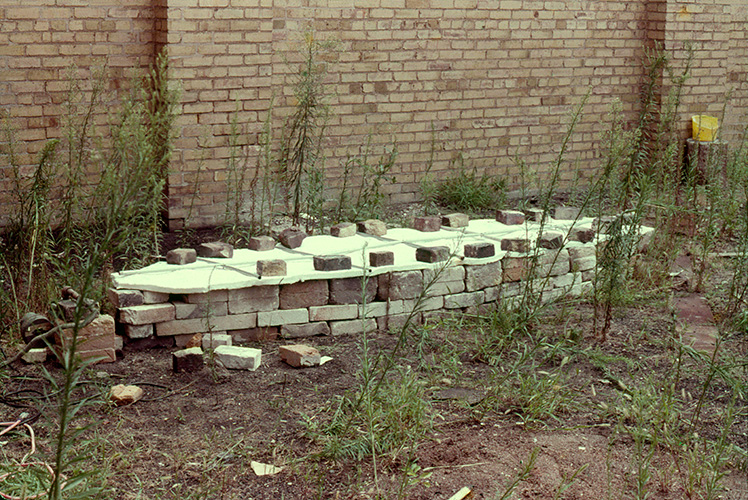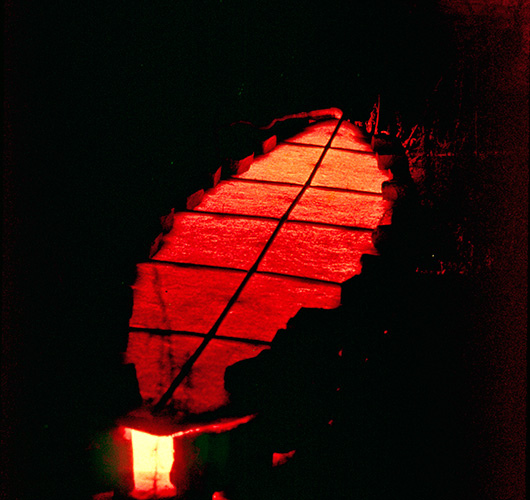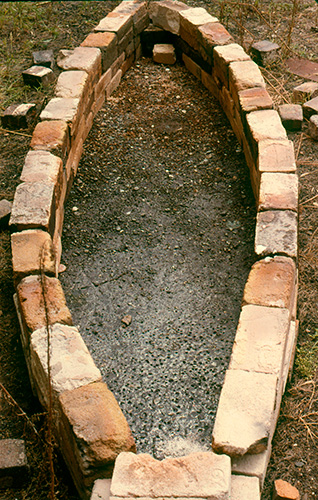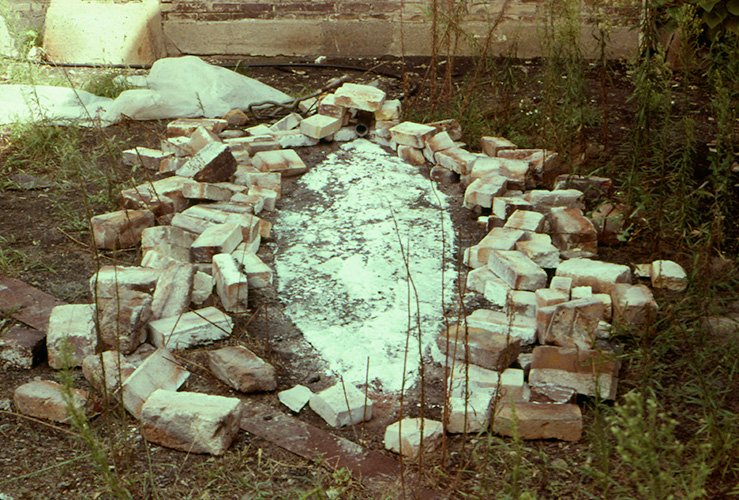Fired and Glazed Earth Piece
University of Notre Dame, South Bend, IN / 1979
Left: Pre fireing, 12 ft long, fire brick, ceramic fiber blanket, metal tubing, burner, propane, earth.
Middle left: One of two night firings, 12 ft long, fire brick, ceramic fiber blanket, metal tubing, burner, propane, earth (borax, frit, soda ash - second firing).
Middle right: 12 ft long, fire brick, fused earth beneath kiln / first firing of kiln.
Right: 12 ft long, fire brick, fused and glazed earth beneath kiln / second firing of kiln.
Fired and Glazed Earth Piece, is the first larger environmental performance/kiln work after a series of smaller experimental kilns and firing projects. This work has two stages, the first of purely firing the existing earth in-situ. The second state, is after a second firing and the layered placement of all powdered glaze materials available at the Notre Dame ceramic facility were fused in-situ. In both cases the burner was placed in one end of the kiln, and left to reach a unknown temperature, the purpose being to let the kiln dynamics and natural forces (to the extent possible) determine the state of fusion of the materials, not a pre-determined formula or goal. The burner was left on until it appeared the kiln would no longer rise in temperature. Much of this attitude came from working with traditional kilns and organizing structures inside that might collapse or become radically altered beyond my control - to allow the kiln and enclosed elements to “speak.”
|
Kiln/Furnace Projects (1979-1992)
ShearZone / 50+ Years of Ceramic Practice
Furnace
Projects Essay Constance
Lewallan;
Kiln
Projects: Material and Process Experiments in/of the Landscape, John
Roloff
Selected/Recent Projects







